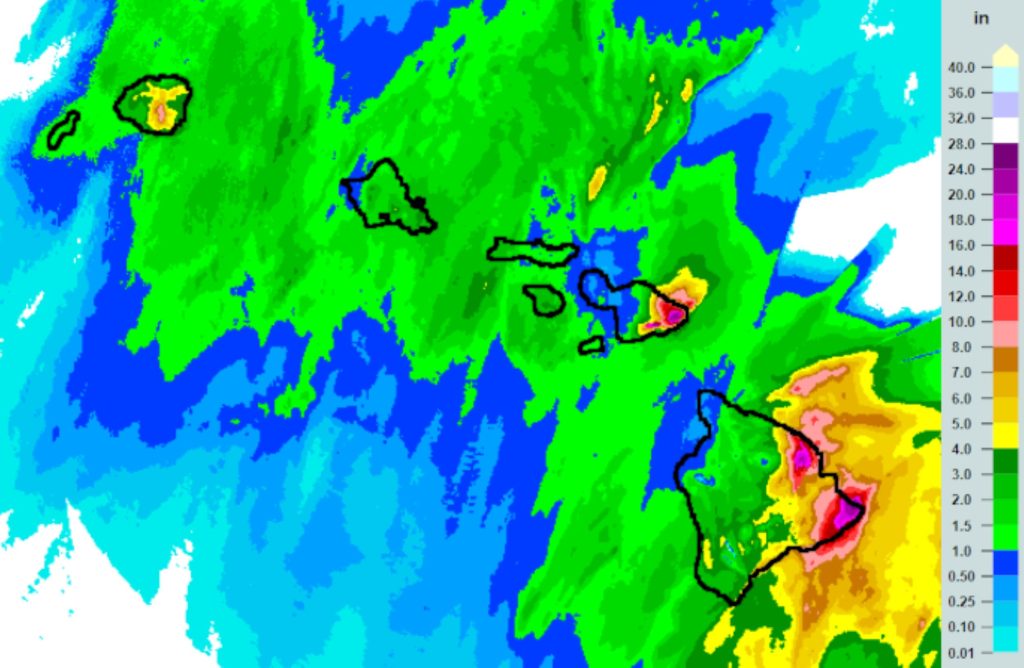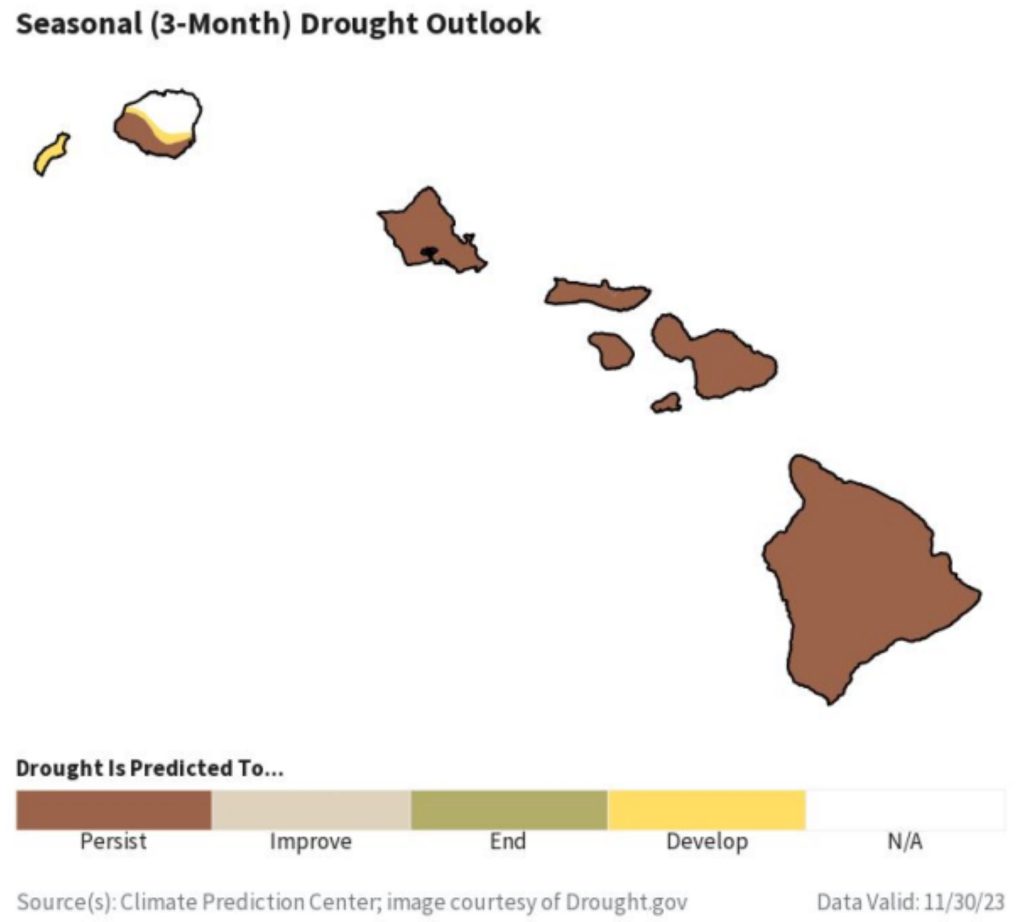Kauaʻi sees near to above average rainfall in November
Regardless of dry conditions persisting throughout the state in November, all rain gauges on Kauaʻi recorded near to above average rainfall totals for the month.
The U.S. Geological Survey’s Mount Waiʻaleʻale rain gauge had the highest monthly total of 46.65 inches, or 124% of average and the highest daily total of 5.46 inches on Nov. 21. The rain gauge also recorded more than an inch of rain on 18 days during the month.
Hanapēpē had its highest November rainfall total since 2007, and Kalāheo and ʻŌmaʻo had their highest November totals since 2009.
For a map of November rainfall totals around the island, click here.
Rainfall totals for 2023 through the end of November were also near to above average at all of the rain gauges on Kauaʻi.
The Mount Waiʻaleʻale gauge had the highest year-to-date total of 347.77 inches, or 96% of average. You can find a map of year-to-date rainfall totals for the island here.
Leeward and southern portions of the island continue to see abnormally dry and moderate drought conditions; however, most of the island is not experiencing drought.
In the longer term, according to a Dec. 8 drought information statement from the National Weather Service in Honolulu, the 3-month outlook shows the ongoing El Niño likely causing below normal precipitation across the state well into 2024. Peak dryness is expected from mid-December through February.
The statement also shows drought persisting or even perhaps worsening during that period in leeward and southern portions of Kauaʻi and on Niʻihau.
Dry weather persisted into the early part of November with a surface ridge of high pressure near the state keeping winds light through Nov. 3. Trade winds returned the next day. Remnants of a cold front boosted rainfall Nov. 6 and 7 along the windward slopes of Kauaʻi and Oʻahu, but did not produce any significant flooding issues.
Fresh to strong trade winds produced daily rainfall along windward slopes of the state Nov. 10-17, but resulted in generally dry conditions over leeward areas.
The weather pattern changed Nov. 18, signaling a much wetter period throughout the state for the rest of the month. Prior to the Kona Low that developed late Nov. 28 several hundred miles northwest of Kauaʻi, the strongest cold front so far during the 2023-24 wet season reached Kauaʻi and put down 2 to 4 inches of rain over the island’s upper slopes.
The front weakened as it passed over Oʻahu on Nov. 20 before dissipating over Maui County later that day.
The Kona Low produced bands of mainly light to moderate rainfall Nov. 28-29, with 1 to 3 inches of rain falling over Kauaʻi and Oʻahu. Only minor flooding issues reported.
The storm shifted west Nov. 30, resulting in a significant increase in rainfall over the southeastern half of the Big Island and eastern and southern flanks of Haleakalā on Maui.
Combined rain gauge and radar rainfall estimates showed 11 to 22 inches over the eastern portions of the Big Island and Maui from Nov. 30 through Dec. 1 before the storm weakened.









